An Intensive A-to-Z Guide to Apples, New England’s Most Iconic Fall Fruit
From Johnny Appleseed to East Boston's Downeast Cider guys to Matt Damon's famous line in Good Will Hunting, here's everything you need to know (and probably a whole lot more) about our region's most quintessentially autumn fruit.
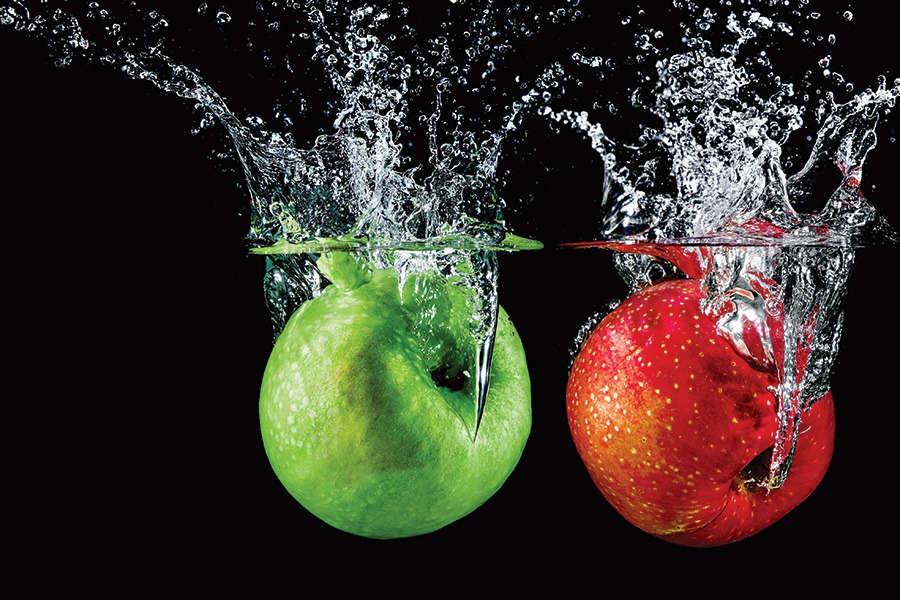
Photo by ERStudioStok/Getty Images
A is for Apple
Children’s books taught us to read, and with the exception of Edward Gorey, “A” was always for apple—ask anybody! Usually a big, red, juicy illustrated piece of fruit with a friendly-looking worm smiling back at us.

Photo by Joe St. Pierre / Styling by Joy Howard
B is for Business Success
The Company: Downeast Cider House
Based in: East Boston
Most dudes who dabble in making alcohol in their dorm room don’t dream of scaling up to selling a million and a half cases of their product per year. But that’s exactly the path that Ross Brockman took. Using fruit from a classmate’s family’s orchard, he began experimenting with making hard cider while he was a student at Bates College in Lewiston, Maine. After graduating in 2011, he decided to turn his hobby into a business, appropriately dubbed Downeast Cider House.
Unfortunately, the launch coincided with one of the worst New England apple crops in history; only one supplier guaranteed Brockman that it could meet the demands of the nascent endeavor, and as a result, Brockman moved his operation to Leominster (the birthplace of Johnny Appleseed) to be closer to his apple purveyor. Despite his move to Massachusetts, Brockman stuck with the name, and following the first season moved the operation to Charlestown, recruiting his brother, Matt, and current COO, Max Keilson.
Steadily escalating sales throughout New England and a diversification in cider flavors and preparations required a subsequent 2016 move to a hundred-year-old storage facility in Eastie’s Boston Harbor Shipyard, where Downeast—named one of the 50 fastest-growing private companies in Massachusetts by the Boston Business Journal in 2020—now finds itself bursting at the seams again. On a recent visit, we donned safety goggles and wended our way through six 16,000-gallon custom-built fermenting tanks sitting alongside 15 smaller fermenters producing cider 24 hours a day with 100 employees working three shifts. All of that machinery serves to make the cider production as consistent as possible, but as Matt Brockman explained, depending on the types of apples used, “There’s some variation between batches. We’re not Budweiser.” downeastcider.com.
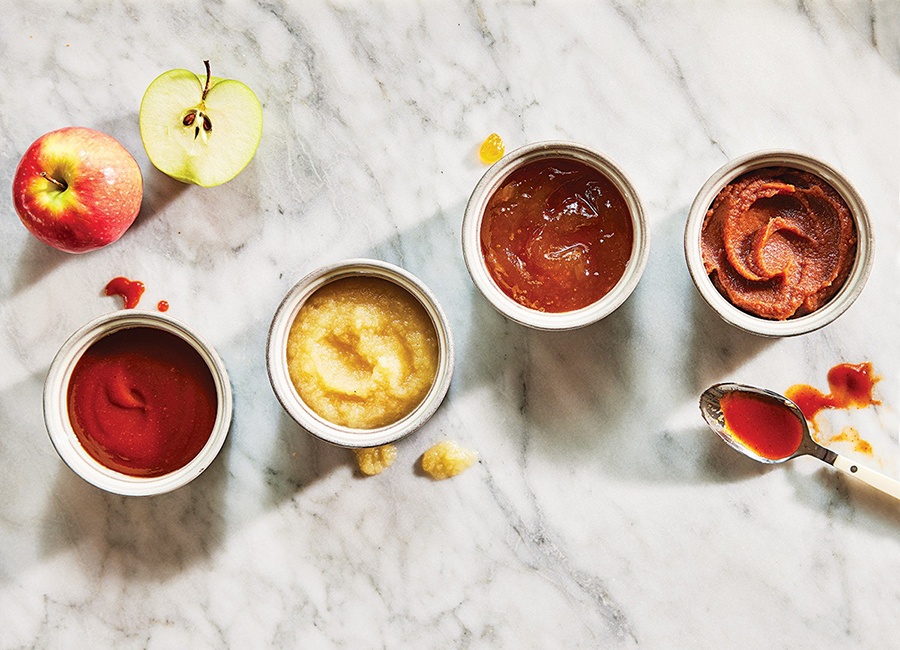
Photo by Joe St. Pierre / Styling by Joy Howard
C is for Condiments
Think there’s butter in apple butter? Think again. The thick, spreadable condiment is made by slowly cooking puréed apples for an hour or more. The purée caramelizes and thickens, resulting in a rich flavor and dark color.
Apple jelly is as delicious as it is underutilized and underappreciated. The good news is that virtually all Massachusetts orchards make their own—our favorites include Boston Hill Farms’ apple-mint and apple-cinnamon varieties.
Apple sauce is as popular as ever and nearly synonymous in America with baby food—though grownups continue to find it a pretty tasty accompaniment to pork chops and latkes.
Speaking of sauces, apple barbecue sauce is a pretty dang delicious twist on a classic. Used largely the same as any traditional barbecue sauce, it gives that little extra tinge of the tangy. We get ours from Connors Farm in Danvers.
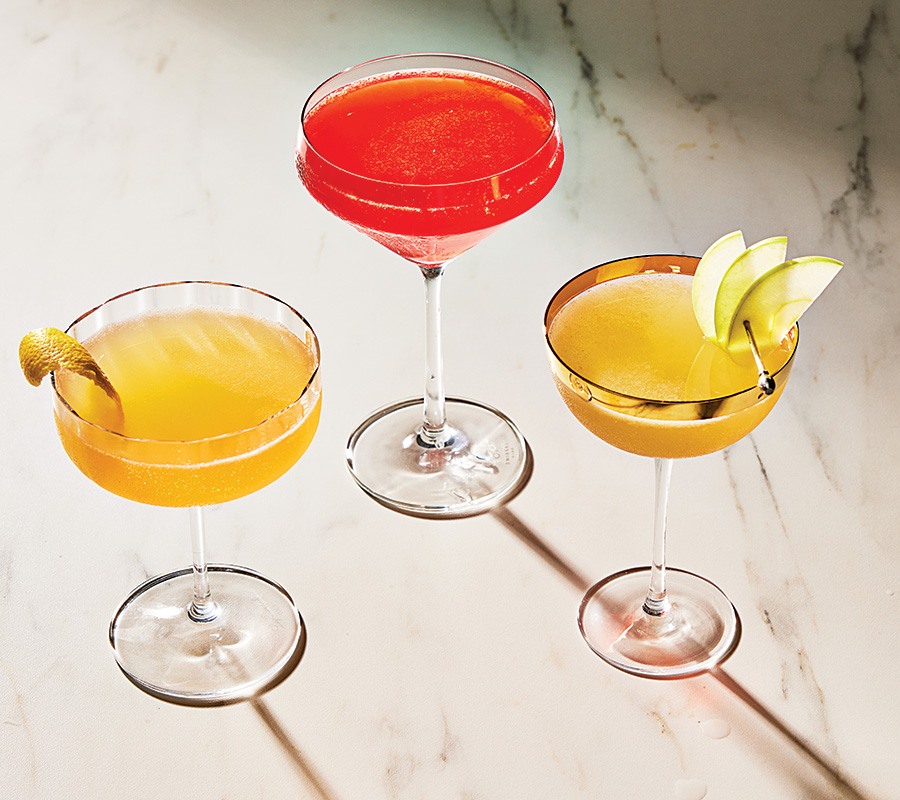
Photo by Joe St. Pierre / Styling by Joy Howard
D is for Drinks
Sometime in the early 2000s, the cocktail known as an Appletini became a sort of shorthand for the bridge-and-tunnel-iest of the bridge-and-tunnel crowd, predating avocado toast as a cheap way to malign an entire demographic as cheesy and unsophisticated. Thankfully, there’s more than one way to put some pomme in your potable. Here are three great apple-brandy concoctions from expert drink makers.
Autumn Stone-Fruit Sidecar
Peter Cipriani, Moonshine 152
- 1.25 oz. Calvados
- .5 oz. peach liqueur
- .5 oz. lemon juice
Shake over ice and serve in a chilled “up” glass with a lemon twist.
Jack Rose
Amy Traverso, author of the Apple Lover’s Cookbook
- 2 oz. Laird’s Applejack or Calvados
- .5 oz. grenadine (Traverso recommends Sonoma Syrup Co. or Stirrings brand)
- .5 oz. lime juice
Combine in a shaker over ice, shake vigorously for 10 seconds, and strain into a cocktail glass.
Laird’s Apple Brandy Daisy #1
Daren Swisher, Daiquiris & Daisies
- 2 tsp. Cointreau
- 1 tsp. yellow chartreuse
- 1 tsp. simple syrup (Swisher makes his with a base of flat champagne and sugar)
- .5 oz. lemon juice
Combine in a shaker over ice, shake vigorously for 10 seconds, and strain into a cocktail glass.
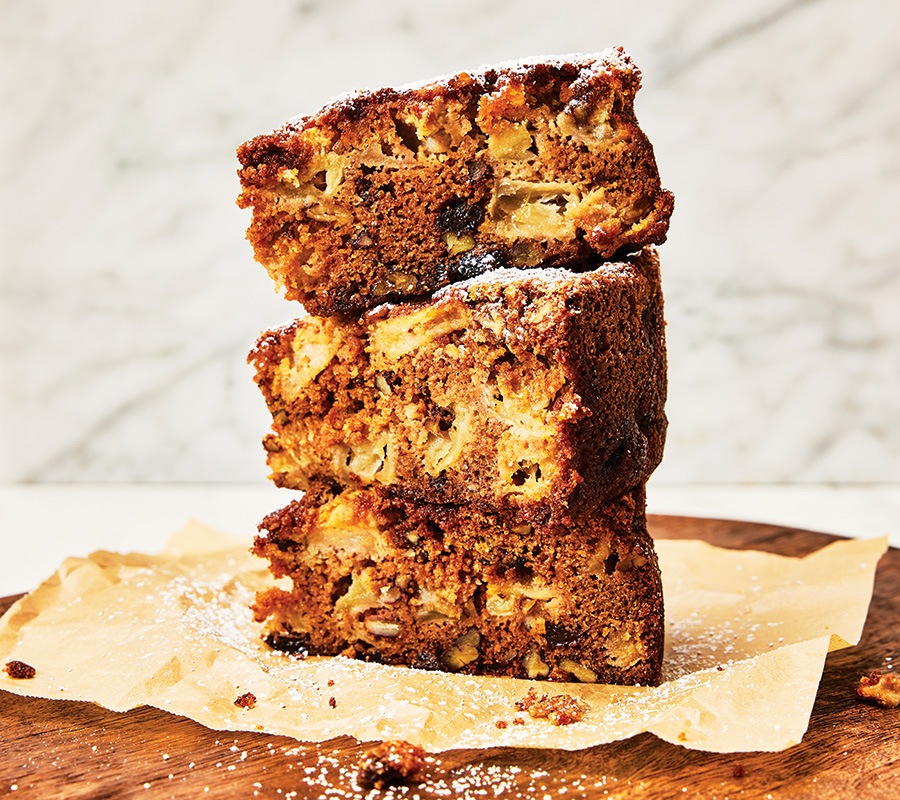
Photo by Joe St. Pierre / Styling by Joy Howard
E is for Eats
Whatever the time of day, we have your apple craving covered.
BREAKFAST
Leave it to the former Harvard math major Joanne Chang to find the precise ratio of apple to spice in Flour Bakery + Café’s yummy apple snacking spice cake. Pair with your morning coffee and thank us later. flourbakery.com.
LUNCH
Take a quick hop to the Mediterranean on your lunch break with Tatte’s crunchy halloumi salad, adorned with fresh apples. It’s delicious, and it’s at Tatte, so it’s probably only a block or two away from your office. tattebakery.com.
DINNER
With just a kiss of apple (in the form of miso-apple butter) accenting this beautifully plated menu mainstay, Waypoint’s roasted local chicken is TDF. waypointharvard.com.
F is for Festivals
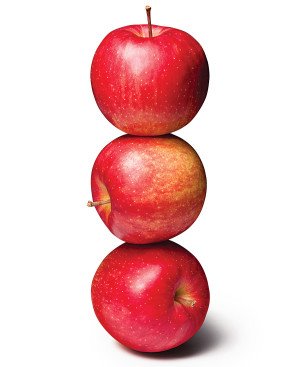
Photo via H&C Studio/Getty Images
AppleFest
Various locations, Northborough
September 7 to 10
This weekend-long celebration of the apple in all of its glory features a Saturday-night fete of live music, barbecue, fireworks, kids’ games, and something called a “monkey bridge.” northboroughapplefest.com.
Apple Country Fair
Brookfield Town Common, Brookfield
October 7
Since 1979, the Apple Country Fair has attracted folks far and wide with an array of local crafters hawking everything from knitted goods to carved wooden bowls—and, of course, scores of apples and apple (lowercase a) products, including candy apples, applesauce, apple pies, and more. Kids enjoy face painting, sand art, and the thrills of a moon bounce. applecountryfair.com.
AppleFest at Wachusett Mountain
Wachusett Mountain, Princeton
October 14 to 15 and October 21 to 22
Stretching over two weekends, this apple bonanza invites guests to peruse the wares of more than 100 crafters and farmers’ market vendors alongside food trucks, live music, hard and sweet ciders, pie-eating contests, and some of the most breathtaking views of New England’s famed foliage from majestic Wachusett Mountain. Come on, sing it with us…Waaaaah Waaaah Waaaahchusett. wachusett.com/events.
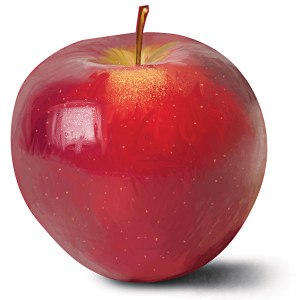
Illustration by Dale Stephanos
Franklin County CiderDays
Multiple locations throughout Franklin, Hampshire, and Berkshire Counties
November 3 to 5
Though it’s billed as a Franklin County event, Ben Clark of Clarkdale Fruit Farms in Deerfield (a perfect starting point for the festival) let us know that through the largesse and cooperative spirit of local farmers, this festival now extends to orchards in Hampshire and Berkshire counties as well. ciderdays.org.
Thanksgiving Harvest Festival
Red Apple Farm, Phillipston
November 18 to 19
Every November, local family farms and businesses from the “Johnny Appleseed Country” of North Central Massachusetts come together at Red Apple Farm to offer all the best fixings for your Thanksgiving table, whether you want to buy yourself a pie or just freshly picked apples to bake one at home. The festival also features delicious food, hard and sweet cider in the Brew Barn, face painting, pony rides and hayrides, blacksmith demonstrations, and live music. redapplefarm.com/fairs-festivals.
G is for Growth
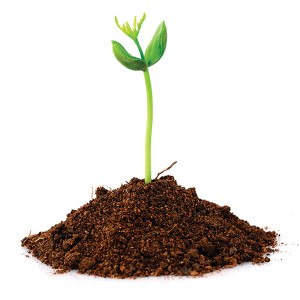
Photo via Dev Images/Getty Images
What does it take to bring an apple from the orchard to your table? Ben Clark, who is also president of the Massachusetts Fruit Growers Association, shares a year in the life of a local apple farmer.
January through March: Winter pruning.
April: Planting for future seasons; spraying and mowing starts.
May: The prettiest season on the farm: apple-blossom time!
Late May through Early June: Chemical thinning of blossoms to enhance apple size and health, followed by fertilizer application.
Late June through July: Hand thinning and summer pruning.
August through late October or early November: Harvest and sale; cidermaking.
Late November through Early December: Equipment is winterized, and the field gets a final mowing.
Late December: Apple farmers take a well-deserved (albeit brief) rest.
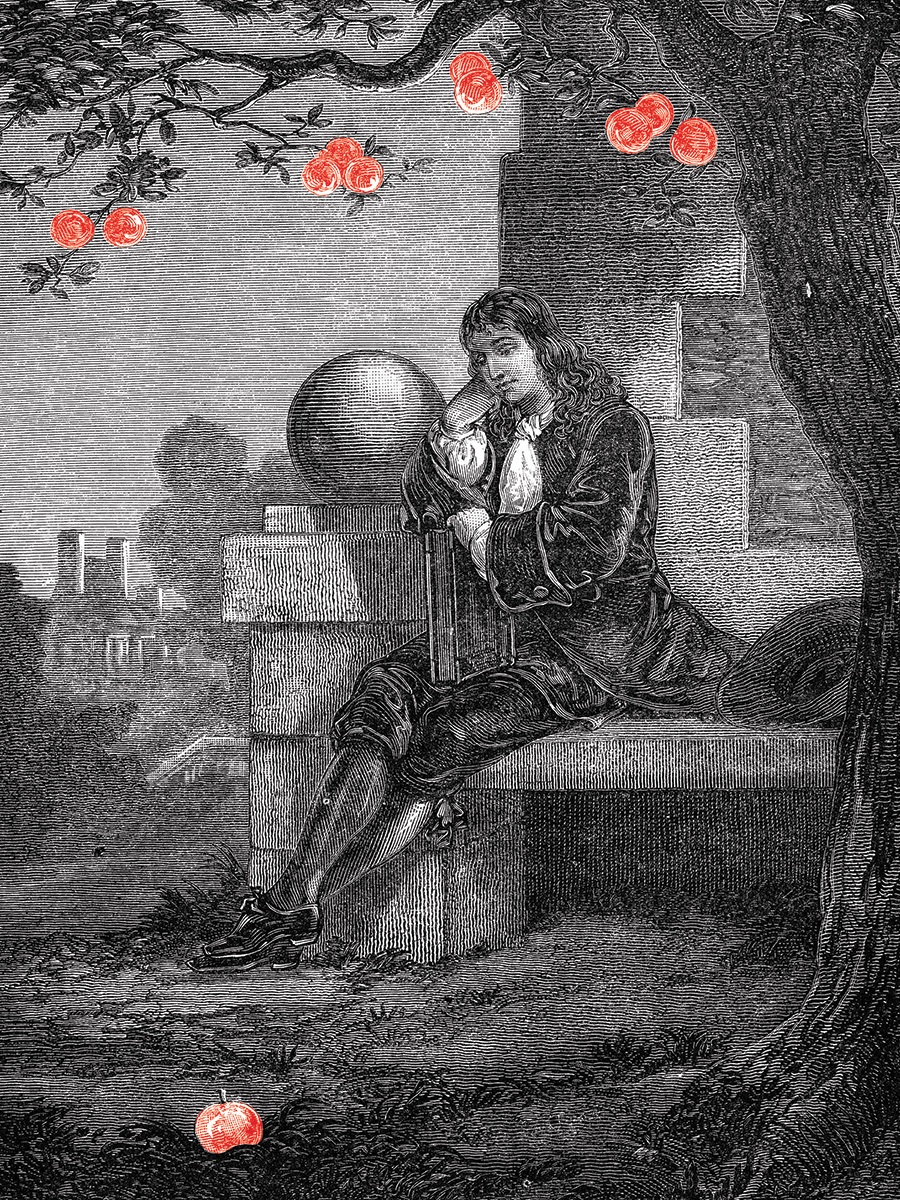
Photo by Photos.com/Getty Images
H is for History
Turns out Borat isn’t the only export from Kazakhstan—in fact, the apple traces its origins to that nation’s wild apple forests and to its capital, Almaty, which translates to “father of apples.” Once these seeds were transported by birds and later by traders to Asia and Europe, people began cultivating apples for consumption.
So how did the fruit eventually become synonymous with New England? America’s first settlers brought apple seeds in their pockets and apple trees in the ship’s holds, and within three years of landing in Plymouth in 1623, the Pilgrims documented the presence of fruit-bearing apple trees. Relatively rugged and able to succeed in the soil regardless of the weather, apple trees were present in nearly every homestead in the so-called New World. In fact, colony leaders advised that settlers should double down on them for easy cultivation and sustenance.
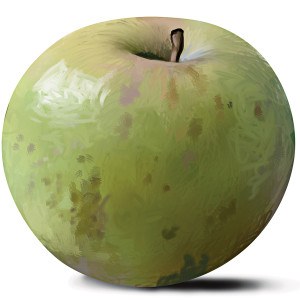
Illustration by Dale Stephanos
As a result, apples became a crucial crop, providing food and cider that was the prevalent drink in the Massachusetts colony, given the untrustworthiness of drinking water. By the 1630s, the first American variety of apple was cultivated in Roxbury and thusly dubbed the Roxbury Russet; its heartiness, storability, and flavor made it popular enough to export as far south as Monticello in Virginia and eventually back to Europe to satisfy Ben Franklin’s cravings while he was abroad. (Meanwhile, in England, a 23-year-old Isaac Newton was taking inspiration from an apple falling from a tree to create the theory of gravity.)
Of course, the most notorious proselytizer of the goodness of apples was nurseryman and spreader of the New Church (Swedenborgian) John Chapman. Born in Leominster in 1774, Chapman—later dubbed Johnny Appleseed for his zeal in planting apple trees far and wide—introduced his crop to Ohio, Ontario, Pennsylvania, Indiana, and as far west as Illinois. The image of Johnny Appleseed as a shoeless free spirit with a mush pot for a hat seems to be documented, although he was not a rube and is said to have amassed a significant amount of land over the course of his life.
Agricultural technology has come a long way since Mr. Appleseed hung up his mush pot. The advent of dwarf trees and hybrid varieties has allowed fruit growers to harvest exponentially more apples on less land. At the same time, insecticides have become more effective and less toxic to the environment, providing consumers with more and better-quality fruit than ever.
I is for Idioms
Over time, apple idioms have become as American as apple pie (not originally American). Here are a few we frequently use.
1
“An apple a day keeps the doctor away.”
This sounds like it was written by ad copywriters for some apple-growers trade group, but in fact, it dates to the 19th century. And there’s some truth to it: A study from the University of Oxford shows that in people over 50, eating one apple a day has the same cholesterol-reducing effect as taking a statin.
2
“The apple doesn’t fall far from the tree.”
Simply put, a child looks, acts, or exhibits similar traits to one’s parents. Like father, like son.
3
“They are apples and oranges.”
This often-used expression indicates an inapt comparison, or as we have grown fond of saying in the age of Twitter beefs, a false equivalency.
4
“One bad apple spoils the bunch.”
We’ll put this in the most Boston terms possible: It only takes one drunk jackass in your group trying to start static to get you all kicked out of the Yankees/Sox game.
5
“The apple of my eye.”
Something or someone you cherish. Ironically, it is the easiest of these idioms to explain while making the least amount of sense.
6
“He’s a real apple polisher.”
Not usually intended as a compliment, this describes someone who obsequiously tries to get ahead. Some of its not-so-flattering synonyms include: brown noser, minion, fawner, parasite, fan, toady, flunky, and lickspittle.
7
“Don’t upset the apple cart.”
This saying is as old as commerce itself and refers to the actual vehicle that was brought to market. Its modern usage means, “Don’t screw this up for everybody else.”
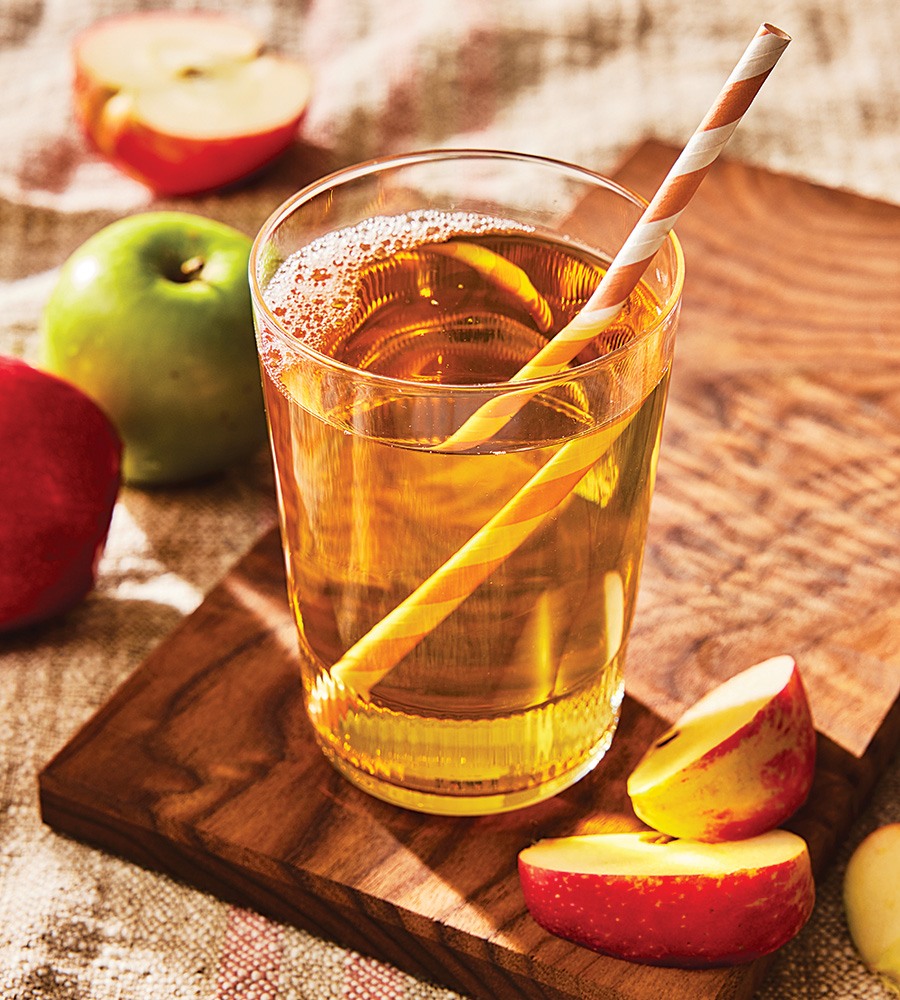
Photo by Joe St. Pierre / Styling by Joy Howard
J is for Juice
Sweet, easy drinking, and mildly alkaline, apple juice has long been as synonymous with childhood as buttered noodles, P B & J, and, in recent decades, animal-shaped chicken nuggets. Be it in a sippy cup, a box, or a formerly Massachusetts-made Veryfine glass bottle with a Styrofoam label (shoutout to my ’80s babies), apple juice in its “no sugar added” form can aid hydration, and according to one recent study, may have positive effects on cardiovascular health. It’s even better for you when enjoyed cold-pressed and blended with kale, spinach, cucumber, pineapple, and ginger at one of Mother Juice’s five locations.

Photo via DrRave/Getty Images / Photo Illustration by Benjamen Purvis
K is for Kaboom!
For those of you who came to this apple article for the action and explosions, K is the letter for you. Before the advent of excavators, dynamite was a crucial farming tool, used to clear rock from New England’s craggy soil. According to Mo Tougas, of Tougas Family Farm, at the turn of the last century farmers would crowbar a hole in the ground, then “place a quarter stick of dynamite into it and light it with the cigar they were enjoying.” The result? “A hole in the ground big enough to plant a tree, softened ground to help tree roots, and the bonus of nitrogen from the dynamite, which was the fertilizer.” Explosive growth, indeed.
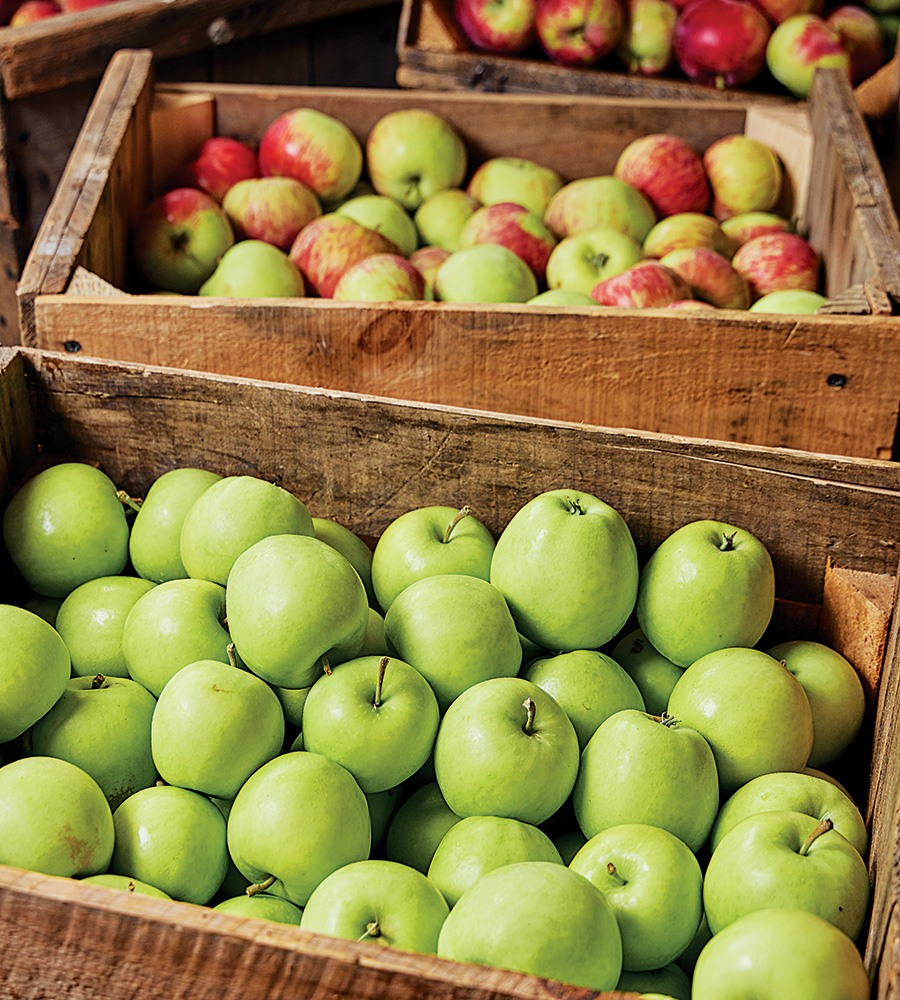
Photo by Brian Samuels
L is for Local
You don’t have to leave the city to find the best locally grown apples.
Red Apple Farm at Boston Public Market
Open year round in Boston Public Market, Red Apple Farm’s urban outpost packs a whole lot of apples and apple products into a city-size space. Grab a cold bevvie from the cider bar and some apple-cider doughnuts for the full effect. redapplefarm.com.
SoWa Open Market
On a recent visit to this bustling outdoor artisan market, open every Sunday from May through October, apple products were available from Drive-By Pies and the omnipresent Red Apple Farms. Downeast Cider, meanwhile, could be ordered from the cleverly repurposed shipping container/beer stand. sowaboston.com/sowa-open-market.
Haymarket
Lending its name to a T station and the general neighborhood, it’s sometimes easy to forget that for the past few centuries, Haymarket has also been Boston’s definitive farmers’ market. With more than 40 vendors representing the area’s diverse ethnicities, the open-air market sells fresh, affordable produce (including apples, naturally). As the website says, “If you want polite people and perfect produce, go to the supermarket, where they’ll smile while charging you $3 per pound instead of 3 pounds per dollar.” haymarketboston.org.
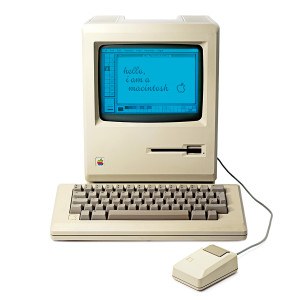
Photo via AudioUndwerbung
M is for Mac
In January 1984, Steve Jobs rolled up to a meeting of the Boston Computer Society with a singular mission: to give one of his first public presentations of the Macintosh computer. It wasn’t much of a surprise. After all, the Hub was full of exactly the kind of people Jobs hoped would buy his machine. Fast-forward nearly 40 years, and the company with an apple as its name and logo—so named for one of Jobs’s “fruitarian diets”—is the world’s most valuable. We’d like to think the tech nerds of Boston had a little something to do with that.
N is for New England Apple Association
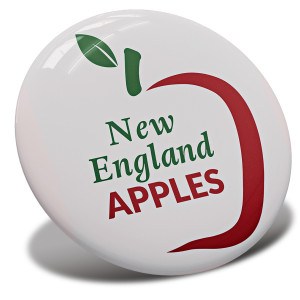
Courtesy photo
As folksy as it seems, apple farming is serious business, and no serious industry exists without intra-business corporate governance and bureaucracy—or, more politely, trade organizations (in this case, swap out the suits for overalls). Both the New England Apple Association and the Massachusetts Fruit Growers Association encourage the growing and marketing of locally grown fruit while providing an arena for shared ideas and practices. Their websites are also pretty helpful if you’re looking for an orchard to visit (more on that below). newenglandapples.org; massfruitgrowers.org.
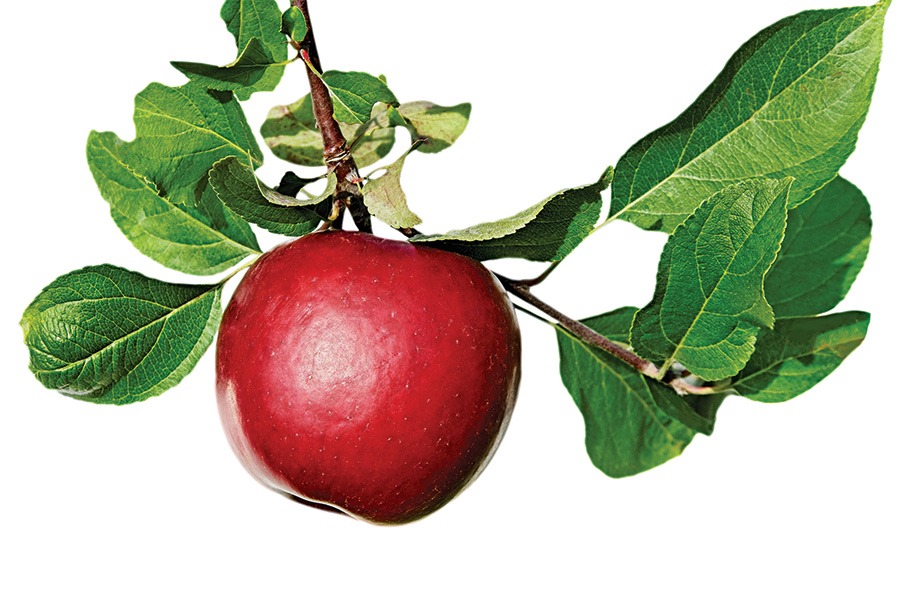
Photo via Ratikova/Getty Images
O is for Orchards
Drink It All In
Nashoba Valley Winery
Bolton
Taking the kids apple picking at Nashoba Valley Winery’s orchards is a great excuse for the adults to visit the most California-style vineyard you will find locally. Touting 23 traditional grape wines, 13 wines from other fruit (strawberry-rhubarb wine, anyone?), 13 distilled spirits, and a handful of beers, hard ciders, and seltzers all made entirely on site, Nashoba Valley is a little bit of Napa just off 495. nashobawinery.com.
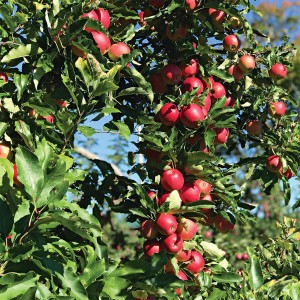
Photo by Steve Holmes Photography
Apple Picking By-the-Sea
Russell Orchards
Ipswich
It’s hard to believe that a PYO orchard, farm store, vineyard, petting zoo, and pumpkin patch could be situated along the road to the majestic Crane Beach, but the North Shore, like its denizens and history, is just quirky that way. russellorchards.com.
Cider Star of the West
Clarkdale Fruit Farms
Deerfield
Why mess with a good thing? This orchard still has heirloom apple varieties from trees planted by the first generation of Clarks in 1915, though it continues to plant new varieties every year. It also hosts Cider Days in November (See F Is for Festivals). clarkdalefruitfarms.com.
Bring the Kids (and the Dog)
Boston Hill Farm
North Andover
This farm is in its 12th generation of family ownership, so it makes sense that it offers plenty of good old-fashioned family fun, in the form of a petting zoo, PYO apples, and pumpkins just in time for Halloween. The best part? Dogs are allowed, so you can really bring the whole crew. bostonhillfarm.com.
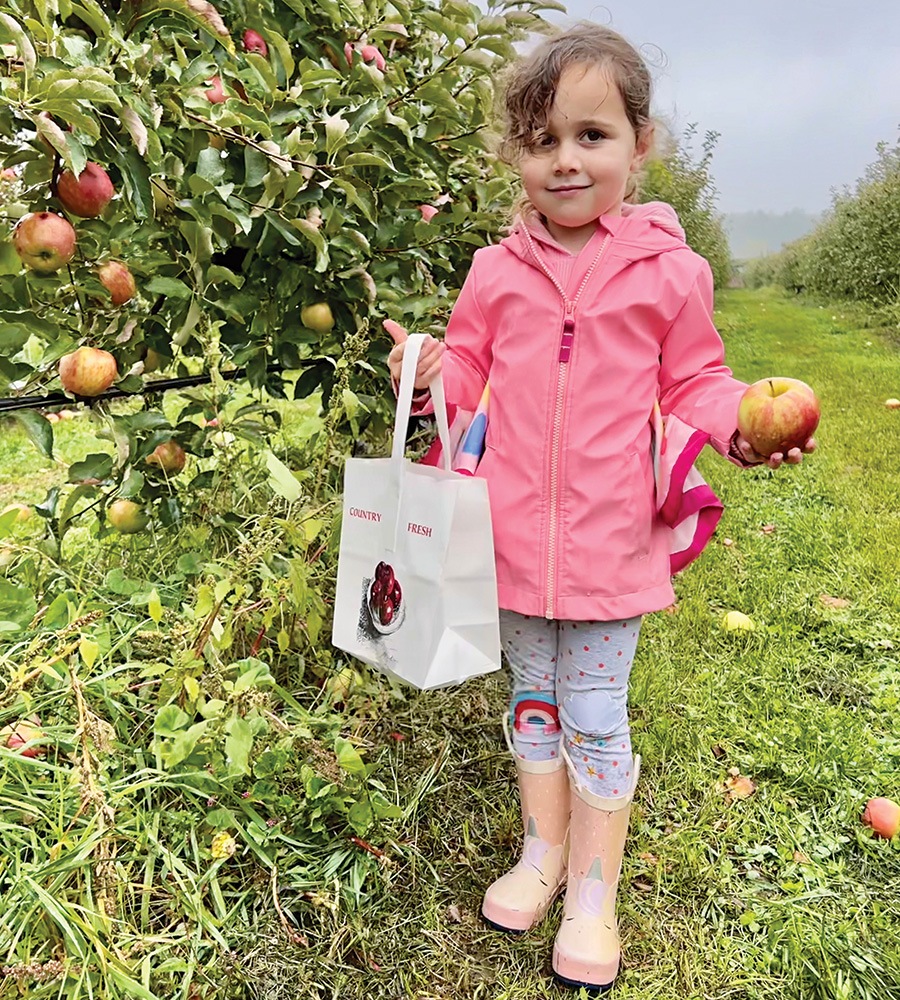
Photo by Laura Neville
City Mouse in the Country
Belkin Family Lookout Farm
South Natick
One of America’s longest continually operated farms, Lookout trades its venerable lineage for some hipster cred with an outdoor beer garden and dining spot, “The Lookout,” whose menu would feel right at home in a hot Somerville gastropub. Yes, there are still PYO apples, pumpkins, etc.—but in a much-appreciated way, this one brings a little city to the farm. lookoutfarm.com.
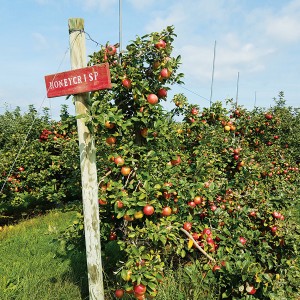
Courtesy photo
Everything Everywhere All At Once
Red Apple Farm
Phillipston
Come for the apples; stay for the adorable roaming chickens. Established in 1912 and continuously operated by the Rose family since they purchased it in 1929, the flagship Red Apple Farm has a significant PYO operation as well as live music, wagon rides, and weekend barbecue. redapplefarm.com.
Pick Love
Alyson’s Orchard
Walpole, NH
This active 450-acre farm distinguishes itself as one of New England’s premier wedding and event facilities, complete with an on-site reception hall and lodging. Even if you’re not the marrying kind, there is still plenty of great apple picking to be done. alysonsorchard.com.
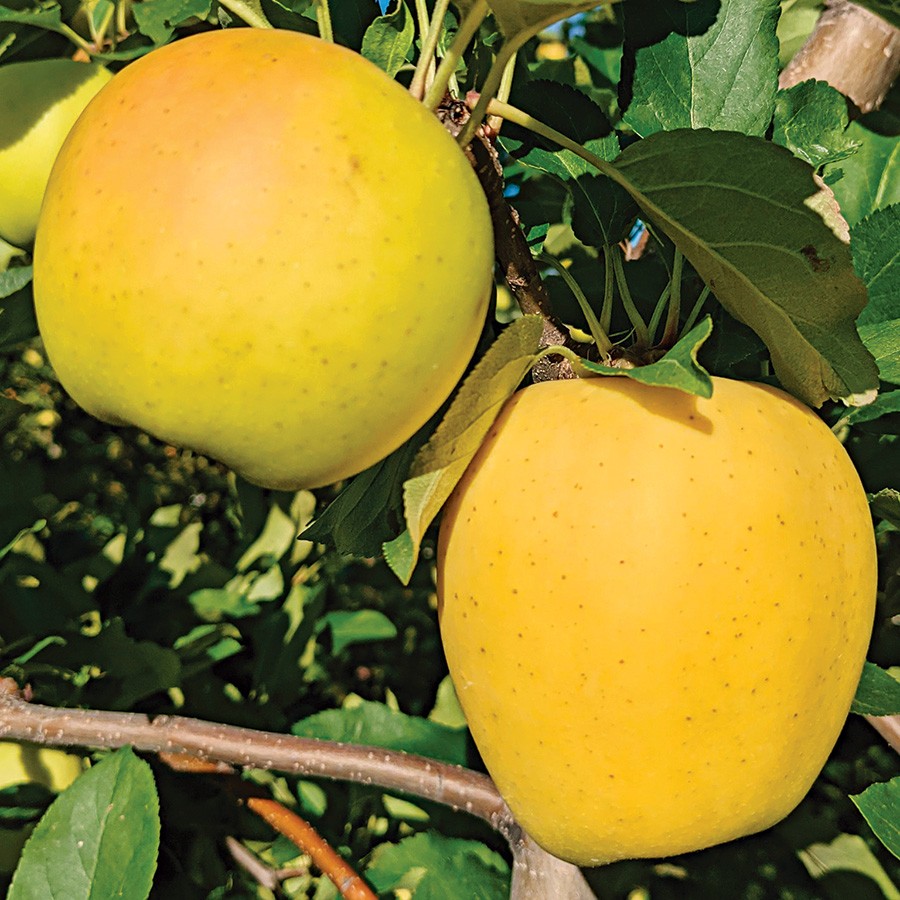
Courtesy photo
A Full Day of Fun
Tougas Family Farm
Northborough
Operating year round, father-and-son duo Mo and Andre Tougas welcome more than 200,000 visitors a year to their Northborough location to pick blueberries, cherries, strawberries, blackberries, peaches, and, of course, apples. They also operate a farm store and a restaurant and have a playground and an array of farm animals to keep the kiddos happy. tougasfamilyfarm.com.
P is for Pick Your Own (PYO)
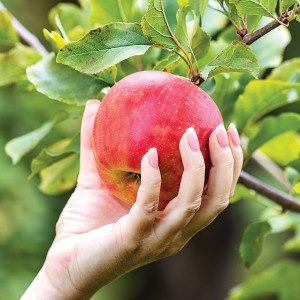
Photo via Zbynek Pospisil/Getty Images
The aforementioned letter says it all—there are plenty of orchards to PYO apples around these parts, with 120 commercial apple growers in Massachusetts alone. It’s not just a quaint way to spend an autumn afternoon, though; it’s an astute business model. On a recent visit to retired orchardist John Bemis’s front porch in Concord, we were regaled with some history. A long, long time ago, he explained, his grandfather and others like him sold apples wholesale to supermarkets from the family farm. Now, “that day has passed,” he says, thanks to the development of much of Massachusetts’ farmland and advances in industrial farming in the Pacific Northwest, Midwest, and New York State that made those regions the country’s apple mega-producers. Today, New England’s remaining orchards are independent retailers that sell at farmers’ markets and their on-site farm stores. Most important, they invite the public to pay by the carload or by the bag to do the hard but fun work of harvesting apples for them.
Q is for Q(AF): Questions asked Frequently
What’s the best way to store freshly picked apples?
Though fine at room temperature, apples will last longer if refrigerated and longer still if wrapped in a damp paper towel. There is a reason the drawer in your fridge is called a crisper. Apples tend to last a week on the kitchen counter, three weeks in a cool, dry pantry, and up to six weeks in the fridge.
What’s the most important quality I should look for when apple picking?
Firmness! If an apple is soft, discolored, or bruises easily, it has likely seen better days.
Why do apples turn brown?
Once you’ve bitten or cut an apple, the active enzymes are exposed to oxygen, and that chemical reaction turns apples brown.
What’s the best way to wash apples?
Rinsing is advised, but if you are serious about the job, add some baking soda to
the mix to ensure a more thoroughly cleaned apple.

Photo by Joe St. Pierre / Styling by Joy Howard
R is for Recipe
Apples are just as tasty in savory preparations as they are in sweet. Here’s one delicious way to help you use up your bushel.
Crispy Pork Belly with Kimchi-Apple Chutney
Recipe by Will Gilson, Puritan & Co. and the Lexington
For the kimchi-apple chutney
- 10 green apples (Granny Smith), peeled and cut into 1/2-inch cubes
- 1 c. thinly sliced shallots
- 1/2 c. brown sugar
- 1 c. kimchi, puréed
- 1 tbsp. miso
INSTRUCTIONS
In a large saucepot, sweat shallots over medium heat until translucent and slightly browned. Add in sugar until melted and a slight caramel color starts to form. Add in apples, kimchi, and miso, and stir to combine. Reduce heat to low and cook down until apples are tender.
For the pork belly
- 1 lb. pork belly, skin on or skinless
- 2 tsp. fine salt or 4 tsp. kosher salt
- 2 tsp. sugar
- A few grinds of black pepper
INSTRUCTIONS
- For skinless pork belly, skip to step 2. If using skin-on pork belly, pat skin dry with a paper towel. With a sharp kitchen knife or Exacto knife, score the skin every half inch at a diagonal, cutting through the skin into the fat. Do not score so deep that it hits the meat. Repeat this process in the other direction to create diamonds.
- Season pork belly with salt, sugar, and a few grinds of black pepper. Cover and refrigerate overnight.
- Preheat oven to 450 degrees Fahrenheit.
- Roast pork belly for 30 minutes on the middle rack in a heavy, oven-safe pan or skillet, skin side up/fat side up. Reduce heat to 275 degrees Fahrenheit and roast for an hour or more, until tender but not mushy. (Larger pieces of pork belly will take longer. Our onepound belly was done after an hour.)
- Remove from the oven and let cool to room temperature. Wrap tightly in plastic and refrigerate until chilled through—at least a few hours and up to two days.
- Once chilled, slice into ¾-inch-thick pieces and brown in a skillet on the stovetop until crisp.
- Top with kimchiapple chutney and serve.
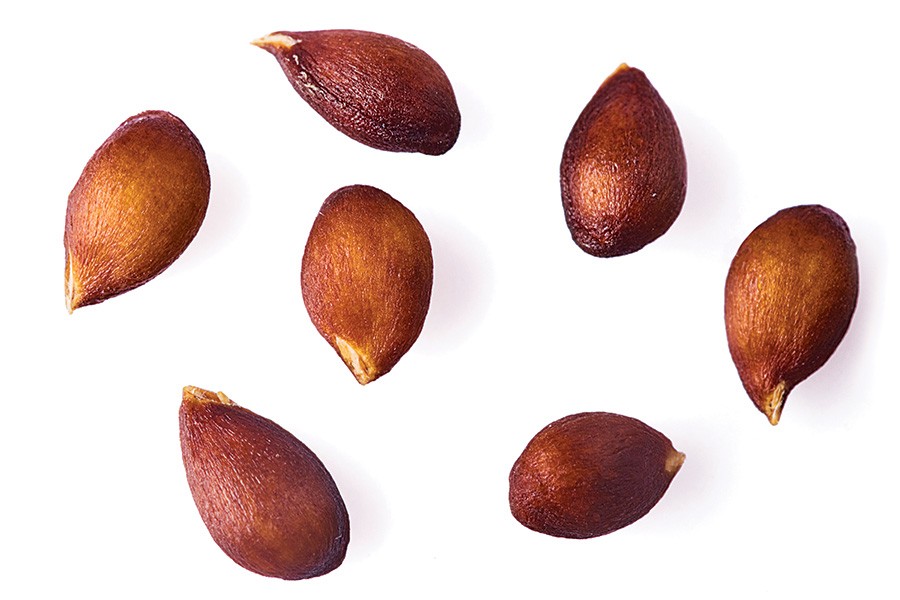
Photo by Vasyl Chybor/Getty Images
S is for Seeds
Ever since Adam and Eve, apples have had an uphill battle on the PR front, made only worse by Snow White’s wicked stepmother poisoning her with an apple. That said, the diabolical idea didn’t materialize out of thin air—apple seeds actually contain a chemical compound of cyanide, albeit trace amounts that are buried under a hard shell that does not dissolve in the human digestive tract. But, for the record, it’s there.

Photo via Sieboldianus/Getty Images
T is for Trees
The classic, old-school apple tree sitting atop a hill or a pastoral lea certainly made for a picturesque scene, but with a required 35 feet of space between each enormously tall and wide planting, it wasn’t exactly an efficient—or particularly safe—way to farm. “Trees like that are dangerous to work with, picking from ladders and pruning in winter—I found myself in emergency rooms more than once from accidents working with them,” says Mo Tougas of Tougas Family Farm. “They are, of course, romantic to the public and a dream come true for injury liability lawyers.” Thankfully, today’s apple trees throughout New England are the product of many years of scientific innovation in breeding dwarf varieties that can produce beautiful fruit while growing 2 feet apart in an orchard and eliminating the mix of ladders and gravity that once put apple pickers in harm’s way.
U is for Urban Apples
Despite formerly being home to orchards in Roxbury and Beacon Hill, Boston’s apple-farming heyday passed a couple of hundred years ago. But urbanites still have an opportunity to admire a hearty collection of apple trees just steps from the Orange Line in the Arnold Arboretum. The green space is home to more than 900 individual plants encompassing more than 50 species, including both apples and crabapples. “The difference between the two lies in the size of the fruit,” explains Jon Hetman, the Arboretum’s associate director of external relations and communications. “Crabapple fruits are 2 inches in diameter or less, while apples are greater than 2 inches in diameter.” The core (no pun intended) of the tree collection can be found on Peters Hill in Roslindale and is as beautiful to walk through in May, when the apple blossoms are blooming, as it is in the fall, “when visitors can see the remarkable variation in fruit size, color, and texture,” Hetman says. So do yourself a favor and plan a long, leisurely walk through the Arboretum this month. And remember, look but don’t touch.
V is for Varieties

Illustration by Dale Stephanos
1. BRAEBURN
TASTING NOTES: This variety off ers a complex, sweet-tart flavor with a noticeably aromatic aftertaste.
BEST FOR: When cooked, the apple turns simpler but doesn’t go flat, making for an ideal applesauce. Bonus points for keeping well in storage.
2. CORTLAND
TASTING NOTES: Larger than McIntosh, Cortland has a tart, tangy flavor and is super juicy.
BEST FOR: According to Fran Kolenik, owner of Brookline’s Drive-By Pies, Cortlands and Braeburns make the best pies, and we believe her because Kolenik makes awesome apple pies.
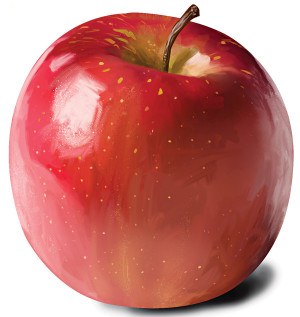
Illustration by Dale Stephanos
3. FUJI
TASTING NOTES: Developed from two American parents, Ralls Janet and Red Delicious, the Fuji apple is full of sweetness and juice. It consistently scores at or near the top in taste tests.
BEST FOR: This apple is perfect for everyday snacking, given it’s among the longest-lasting of any sweet variety, retaining its firmness for up to a
year in refrigeration.
4. GOLDEN DELICIOUS
TASTING NOTES: Not related to the red apple of a similar name, the Golden Delicious is best described as mild and
sweet.
BEST FOR: Enjoy it in cider, pies, and sauce with little or no added sugar.
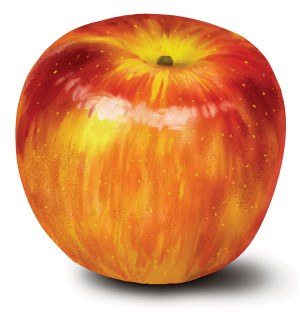
Illustration by Dale Stephanos
5. HONEY CRISP
TASTING NOTES: A top-five worldwide seller, this Honeygold and Macoun cross offers a balanced bite with notes of pear.
BEST FOR: It’s just as good in a salad as it is in a pie or apple crisp.
6. LUDACRISP
TASTING NOTES: A descendant of the Honey Crisp, this beauty was probably named by someone who loves: a) southern hip-hop; b) The Fast & Furious franchise; c) clever wordplay; or d) all of the above. It’s red, juicy, and has been described as having the flavors of tropical fruit.
BEST FOR: Rinse it off and take a big bite.
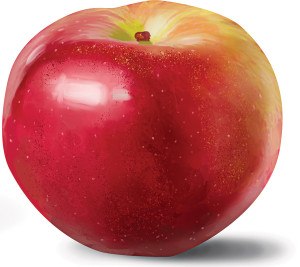
Illustration by Dale Stephanos
7. MACOUN
TASTING NOTES: The crisp-but-tender, tartbut-sweet apple has some resemblance, in taste and appearance, to its parent McIntosh (bred with Jersey Black).
BEST FOR: Another juicy number, this makes for a good pie apple.
8. MCINTOSH
TASTING NOTES: Originally cultivated in Canada, this red- and-green-mottled favorite ruled New England for a long time, but the tart apple has gradually been succeeded in popularity by varieties that are thicker-skinned and damage less easily.
BEST FOR: Sip ’em in cider, slice ’em up for the kids’ lunch, or put together a homemade applesauce in no time.
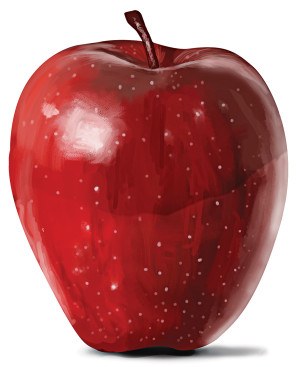
Illustration by Dale Stephanos
9. RED DELICIOUS
TASTING NOTES: These are what most people envision when
they picture an apple—hale, deep red, and, true to brand, delicious.
BEST FOR: Red Delicious cannot stand the heat, so get them out of the kitchen and eat one straight from the crisper.
10. ROXBURY RUSSET
TASTING NOTES: Dating to the early 1630s, this complex number is America’s first homegrown and named apple, featuring a high sugar content and notes of guava and citrus. And yes, it divines its provenance from our very own Roxbury, where it was first grown.
BEST FOR: If you can find this heirloom variety, you’ll want to enjoy it in its whole form.

Illustration by Dale Stephanos
W is for Worms
In the aforementioned children’s ABCs books, the referenced apple (that A is for) frequently appears with a visitor protruding. Smiling and friendly in illustrations, the worm is slightly less welcome in real life and, in several cases, isn’t even technically a worm: The most common apple infiltrator is actually a codling moth larva or an apple maggot, often referred to as a railroad worm. They are common pests and ruin crops if they are not controlled. So in all likelihood, you won’t encounter one, because they tend to make fruit unsuitable for picking or sale
X is for Xylose
One of the predominate sugars naturally occurring in apples, xylose is part of what gives apples their sweet taste. (Scrabble, Words with Friends, and Spelling Bee enthusiasts, take note—you now know a new word that begins with X.)
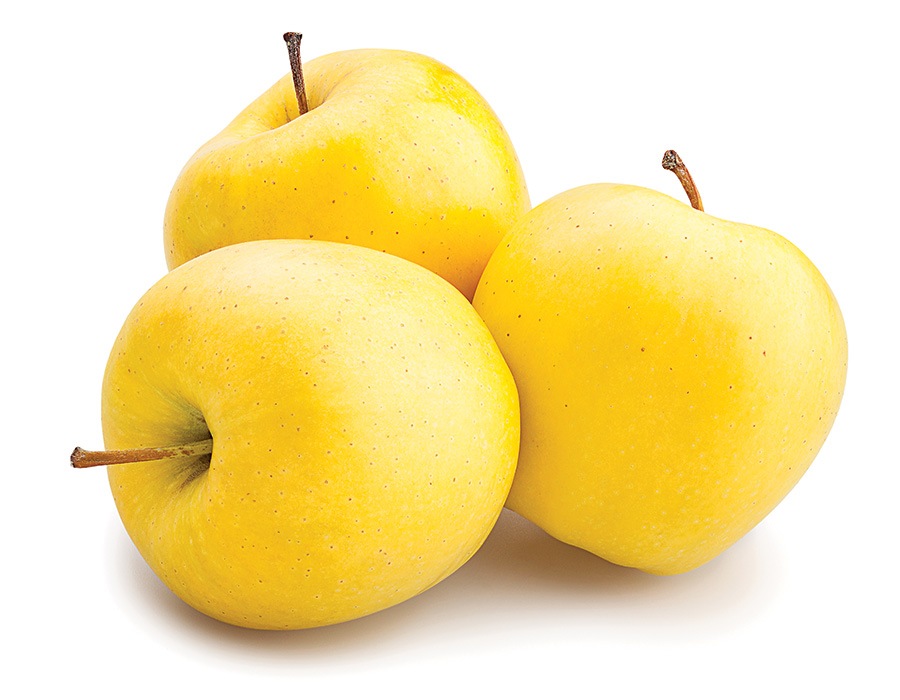
Photo via Getty images
Y is for Yellow (Green and Red)
An apple’s predominant color, scientifi cally known as its “ground color,” can be yellow, white, green, striped, or red. As Washington State University scientist and apple expert Kate Evans put it: “A red apple is kind of a pretty, attractive, easy-to-see piece of fruit, especially against the green leaves,” and may be nature’s way of telling hungry animals, “‘We are delicious!’”
Z is for Zymology
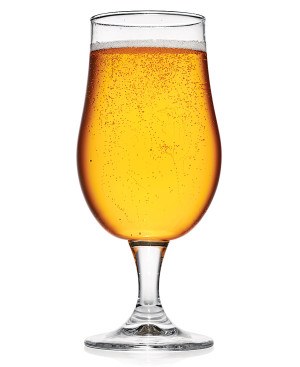
Photo via Getty images
Based on our middle school trips to Plimoth Patuxet Museums, we can neither confirm nor deny whether pilgrims used the word “zymology,” but we can tell you most assuredly that they applied its principles.
Back then, before the advent of refrigeration and water on tap, pressed apple cider was the house beverage. Nearly every home had apple trees, and since the distinction between hard and sweet cider had yet to be determined, all cider was, to varying degrees, hard. By that math, most people, adults and children alike, were day-drinking, leading to such questionable decisions as buckled shoes in the snow.
Experimentation eventually taught the New Worlders to use the apple fermentation process to their advantage, creating vinegars for pickling that preserved fruits and vegetables.
Fast-forward two centuries, and this process was brought to the modern-ish age in research labs by Louis Pasteur, the father of modern microbiology, immunology, and the science of fermentation (a.k.a. zymology). Once Pasteur’s scientific advancement reached our shores, we were ready to begin purposefully regulating alcohol levels in cider, beer, and other beverages. The twin catastrophes of Prohibition and the hurricane of 1938 respectively destroyed much of the legal creation of hard cider and southern New England’s apple orchards themselves, and manufacturing the once-principal alcoholic beverage of the Massachusetts Bay Colony (by then simplified to Massachusetts) experienced a multidecade lull. Only the recent renewed popularity of the beverage over the past 20 years has once again made New England the epicenter of hard cider experimentation and production.
First published in the print edition of the September 2023 issue with the headline, “How Do You Like Them Apples!”


